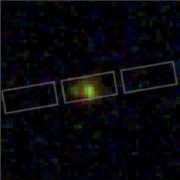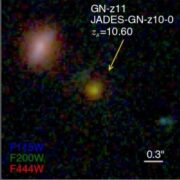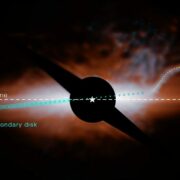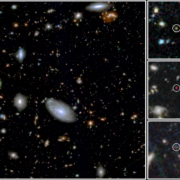A recent study led by Centro de Astrobiología (CAB), CSIC-INTA, researchers have studied in detail previously unknown galaxies discovered by JWST, finding that the early Universe was much more active forming stars than expected.
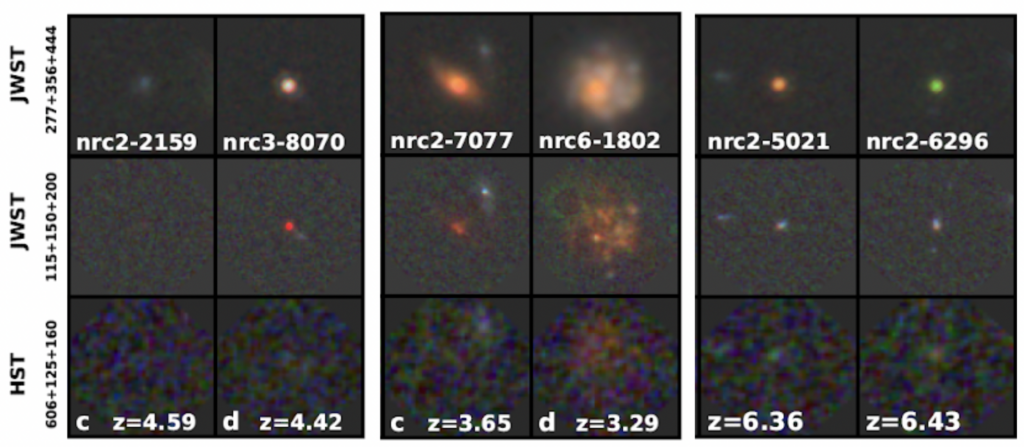
The JWST is providing many surprises to astronomers. Among them, a new paper that just appeared in The Astrophysical Journal Letters describes 3 types of galaxies, one stranger than the other, that astronomers are starting to study in detail with data coming from one of the largest international collaborations working with JWST data, CEERS.
“In the last 10 years we pushed some of the most powerful telescopes to their limits, and we knew about some galaxies that were very bright in the mid-infrared range of the electromagnetic spectrum, but Hubble did not see anything at all at their position on the sky, we called them HST-dark galaxies”, comments Pablo G. Pérez-González, researcher at the Centro de Astrobiología (CAB), CSIC-INTA (Spain) and first author of the paper. These mysterious galaxies were missed not just by Hubble, but even the most powerful ground-based telescopes such as GTC, VLT or Keck. “We knew they were very interesting distant galaxies, but we had very limited data to really understand their nature”, adds Guillermo Barro, professor at the University of the Pacific (California, USA).
With the launch of JWST, several research teams in the world started to look for these galaxies and study them carefully. Many of them used public observations that were planned years ago to address a variety of scientific questions. “The CEERS project was planned to serve the whole international community and demonstrate the type of science that JWST data can facilitate”, says Steve Finkelstein, professor at the University of Austin (Texas, USA) and principal investigator of CEERS. “With that purpose, we put together a list of Key Papers that we thought could guide the research of the international astronomical community about galaxy evolution during the first years or even the whole JWST mission”, adds Prof. Finkelstein.
Another one of these key papers discussing the properties of the HST-dark galaxies has just been published in a refereed journal after a rigorous peer review process. With the advantage in mirror size and wavelength coverage, JWST is able to not only study those elusive galaxies as a whole “but also analyze their internal structure, whether some parts of the galaxy were formed before others”, mentions Ángela García Argumánez, PhD student at Universidad Complutense de Madrid, whose thesis work is precisely understanding the assembly of galaxies with JWST data.
With the superb data provided by JWST, this research team within the CEERS collaboration has found that HST-dark galaxies are heterogeneous in nature. The work has discussed that some of them are galaxies which formed most of their stars in the very young Universe, they assembled very fast and astronomers say that they are dead, they no longer form new stars in significant amounts. “These are strange galaxies that halted their formation for some reason we don’t yet understand”, explain the authors of the paper.
Another subtype of HST-dark galaxies is the opposite, they are forming stars very actively and in regions with lots of interstellar dust. “How were these galaxies able to form so many metals and how did those metals turn into dust, maybe planets, in just 1-2 billion years? We still don’t know in detail how this is possible, very strange”, adds Prof. Barro.
And the third type is even more strange. Many of the HST-dark galaxies lived when the Universe was merely 1 billion years old, but they appear to already have lots of oxygen atoms at high temperatures, shining very brightly. The authors of this paper interpret this emission as the presence of very hot stars with very young ages, they should be 1-2 million years old maximum. But the presence of oxygen already means that there should be other stars formed before that are outshined. “Imagine that you watch a soccer game only for 5 minutes, how probable is that you see a player scoring a goal? So it is really strange that we see so many galaxies which have so many young stars, it’s very difficult to catch galaxies with stars as young as 2 million years old when the Universe is 1 billion years old. Something must be happening in those galaxies that we still don’t understand, maybe the presence of very young and active supermassive black holes taking galaxy formation to a whole new dimension”, concludes Dr. Pérez-González.









